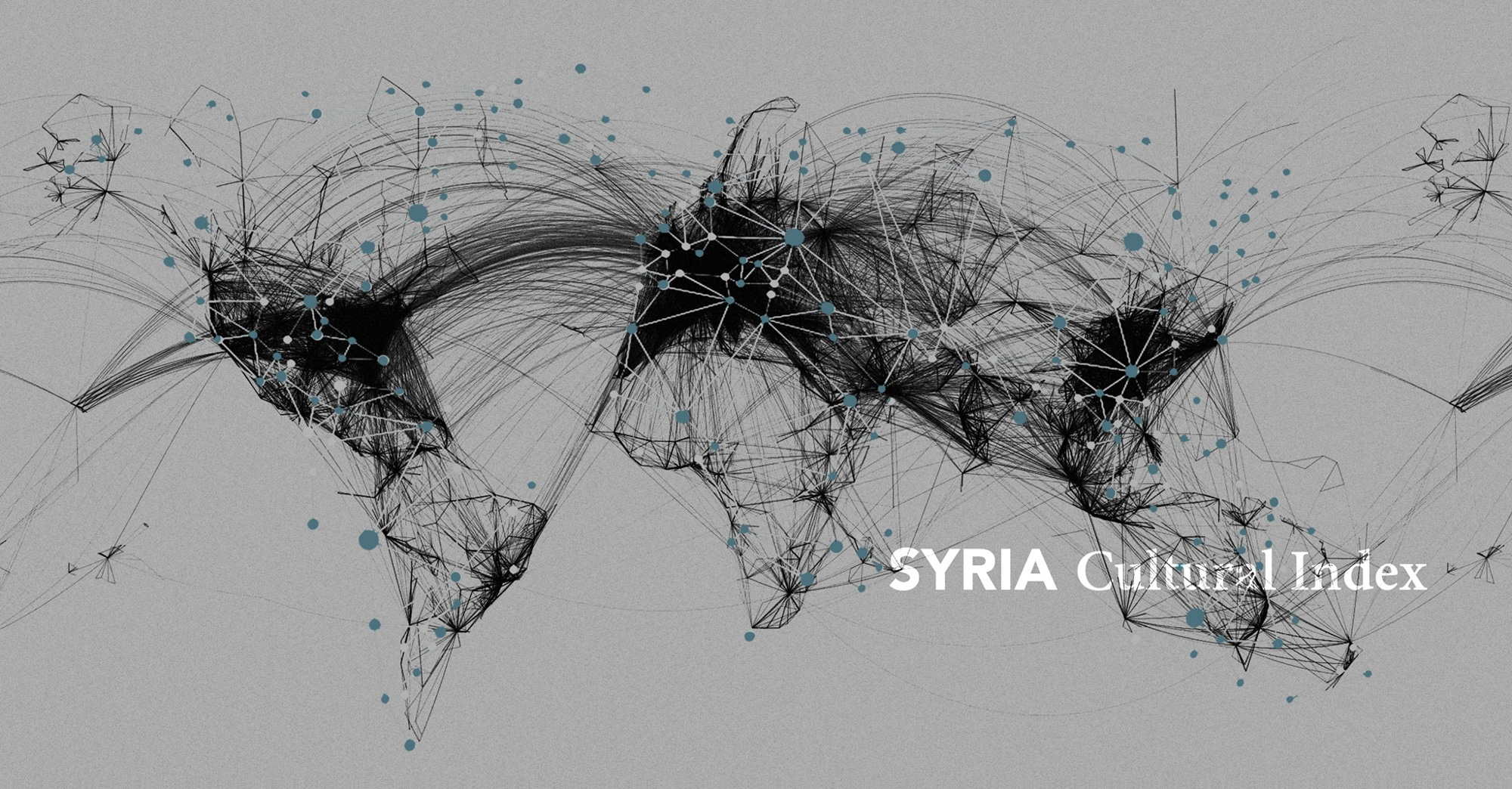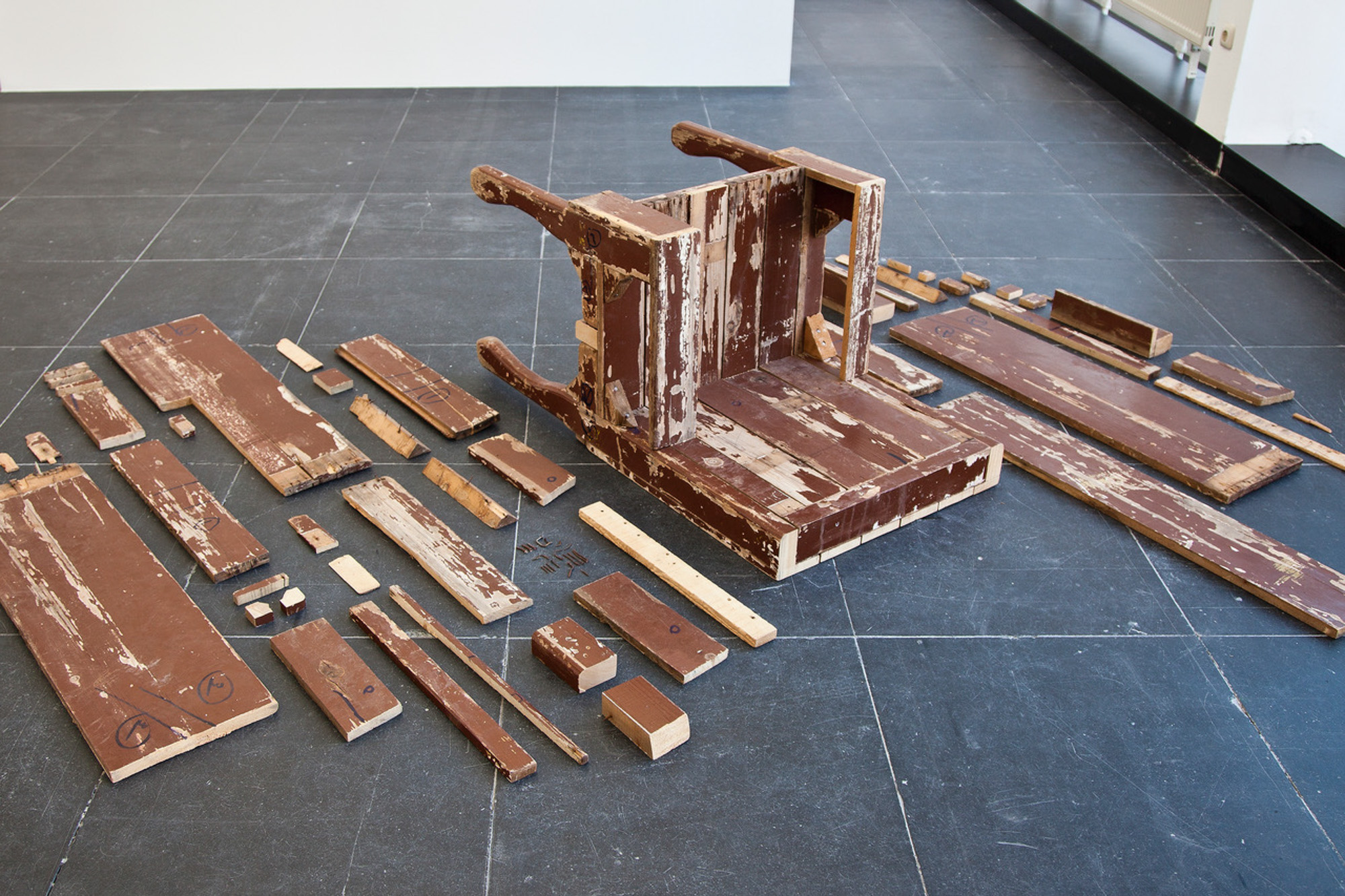An Absence that Makes the Art Bolder: Interview with Khaled Barakeh
By Frances Arnold

Portrait of KHALED BARAKEH. Photo by Andre Wunstorf. All images courtesy the artist.
Berlin-based Syrian artist Khaled Barakeh is the founder of coculture, a nonprofit organization that supports displaced artists from the Middle East with various initiatives, including the forthcoming Syrian Biennale, a traveling event following refugee routes, as well as the Syria Cultural Index, a database and platform aimed at connecting and promoting Syrian cultural practitioners, due to launch in late 2021. Alongside these community projects, Barakeh’s own artistic practice addresses the Syrian civil war through multimedia storytelling. After studying fine art in Damascus, Barakeh completed postgraduate studies at the Funen Art Academy in Odense, and at Frankfurt’s Städelschule. During this time, he found himself displaced, unable to return to his native Syria. “I call my practice one of necessity; I found myself doing things I wasn’t planning on doing,” he said. AAP spoke with Barakeh about creating community and his approaches to making art about violence and oppression.

What was the motivation for creating the Syria Cultural Index? How did it come about?
I wanted to channel opportunities for artists whom I didn’t yet know. It was 2015, so I had already been in Europe for seven years. Many institutions and collectors were asking me to recommend Syrian artists, and of course, I was mostly mentioning friends. It was unfair, so I thought about how to democratize this to reach more people. The initiative was very basic at first—it took the form of a questionnaire shared via Google Surveys through my network: what’s your name, where do you live, what opportunities are you interested in? Initially it was only intended for Syrian visual artists in Berlin, but then I thought why not anywhere? I also extended the call for not just visual artists, but all cultural producers. Then, I reimagined it as an app: more refugees arrive with a mobile phone than a computer.
I wrote a project proposal for funding but missed the deadline, so I posted a description on Facebook and it somehow reached a director of the Ford Foundation in Cairo. She liked the idea and we decided to launch an organization called Syria Cultural Index. We got ourselves set up and told Ford that we were ready and to please send us the money—but the funds got lost. After lots of long calls and emails, we realized that not only had our bank blocked the payment, they also wouldn’t have us as customers because the initiative had the word “Syria” in it, and members of Syrian background. We decided to expand our remit and change our name. That’s how coculture—now the engine of an ecosystem of projects—came about.

KHALED BARAKEH
The Index has been poised to launch for a while. What is its current status?
It has been delayed: the plan was to launch a year ago, but we got unlucky with web development agencies. I hope it will go online in the next few months.
We’re shaping the platform to have a “gig culture,” like Uber, Airbnb, or even Facebook, in the sense that we’re not creating the content, we’re creating a place for people to exchange information and resources. We’re keen to encourage an exchange economy. Users will be able to make requests by location: for instance, I’m an artist in Berlin and need lights for filming. We hope it will be a useful tool to guide people in other ways too, like how to apply for funding. We’ve tried to think of unique selling points to make it both attractive and advanced—that includes the use of blockchain, for example, and we’re thinking about the possibility for NFTs.
The Index is initiated by coculture but we want it to be a community project in its ownership. For that reason, artists with a profile on the platform will have a share of the Index, meaning they have a vote, can raise topics, and can propose changes of administration—whatever the community decides.
Political engagement also permeates your own practice. In what way was your military service—when you had to repeatedly paint former Syrian president Hafez Al-Assad’s portrait—a precursor?
That experience gave me a better understanding of art as a tool, or as a weapon. I didn’t have a choice: as an 18-year-old in military service, when you’re told to do something you have to do it. I was part of this propaganda machine. But that position also showed me that art can equally be a tool for telling stories of the oppressed. In this sense, the experience gave me an awareness of what art can do. Because I was part of this machine, I decided to work specifically on topics that deal with social justice, human rights, and equality.
In a way, I make fun of it: I like to say, “I became an artist because of a dictator.” Of course, he didn’t make me an artist, but the circumstances meant that I got to practice before applying for art school. Apart from calligraphy, we didn’t have drawing or painting classes in school. My family didn’t have the money for them either, and like many parents from the region, they wanted their children to become doctors, lawyers, or engineers. So maybe it was a good coincidence. I had to practice, and I had to be good, because otherwise they would send me to jail.

KHALED BARAKEH, Regarding the Pain of Others, 2013, wood, dimensions variable.
Many of your works commemorate those killed during the Syrian civil war. In particular, I find Regarding the Pain of Others (2013)—a poem and a stretcher that carried 135 bodies during the uprising—especially poignant. Can you tell me about it?
That work was a turning point. I was living in Frankfurt at the time. Since 2011, I had avoided making any art related to Syria: I felt I was starting to get attention because I’m Syrian, not because I’m a good or bad artist. I decided that I didn't want to “benefit” from catastrophe, even if it’s my own people’s suffering. I changed my position around 2013: Syria was in the news daily, but people were becoming numb to what was happening. I started producing work about Syria again, and this was one of them. It was my way of connecting two realities: physically I was in Germany but I was mentally and emotionally attached to what was happening in Syria.
For the installation, I approached a guy in the Free Syrian Army about transporting a na’ash [a wooden stretcher used to carry the dead from the mosque to the graveyard] through Jordan, and then to Germany. He connected me with a Sheikh from the mosque. My first thought was, “Oh no, now I have to talk to him about contemporary art, he’ll never understand!” But I was surprised: he thought the idea was amazing and started drawing connections between people's blood going back into the earth, where the trees that provide the wood for the na’ash came from . . . I really wasn't expecting that!

KHALED BARAKEH, The Untitled Images, 2014, digital print, 21 × 30 cm each.
In the photo series The Untitled Images (2014), absence manifests as negative space, with blank spaces denoting deceased individuals who are held in the arms of others amid war-torn landscapes. How does absence tell the stories you want to share?
Since the beginning of the uprising this has been the challenge: how do we tell the story as artists, as film makers, as writers? How can we not reproduce the violence that’s already there, but tell the story of the oppressed who died? My gut feeling guided me to emphasize the presence of the victims by their absence. I also think that not going directly to the story but rather telling the story from a different perspective is more intimate: because it’s more indirect, it allows the audience’s emotions to engage, without me imposing emotions on you.
With The Untitled Images, when people see the original photos, their first reaction is to turn their face. It’s an unconscious response: we want to protect ourselves from harm, so we look away. How do I get you to see, without this reaction? I want you to look. So that’s why I introduce negative space and absence. Same with Relentless Images (2018), which homes in on the metadata recorded in the images of [military defector and former photographer of the Syrian Regime, alias] Caesar. His job was to photograph and document dead bodies in jail. They would write on tape attached to each body a number and the name of the intelligence service responsible for this person’s death. Caesar smuggled around 55,000 photos out of Syria and these materials are used as strong evidence against [current Syrian president Bashar Al-]Assad. I was surprised that more people don’t know about these images and felt an urgency to work with them, to make the story visible, but also to preserve the dignity of the dead. No one wants their loved ones to be remembered this way. So, in the work, I reproduce the tape labels only.

KHALED BARAKEH, Relentless Images, 2018, ink on paper, 42 × 55.6 cm each.
Conflict in the Middle East continues, particularly with regard to Israel and Palestine right now. In terms of healing, what role could art play?
Art can be anything: it’s something we can’t categorize. It therefore has this unique potential to create new environments, new sets of questions, new answers and assumptions, and make space for people to change their minds. For me, socially engaged art is most interesting because this is where we use our gift as artists: to support communities in creative ways. That’s especially important with the pandemic, because even the definition of community is changing: this past year we’ve been functioning as individuals connected virtually to digital communities. If we talk about healing, I think art, culture, and education are the most powerful tools we have in conflict times, radical times, and hard times. Art is where we might find answers, comfort, and solutions.
To read more of ArtAsiaPacific’s articles, visit our Digital Library.







